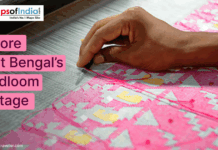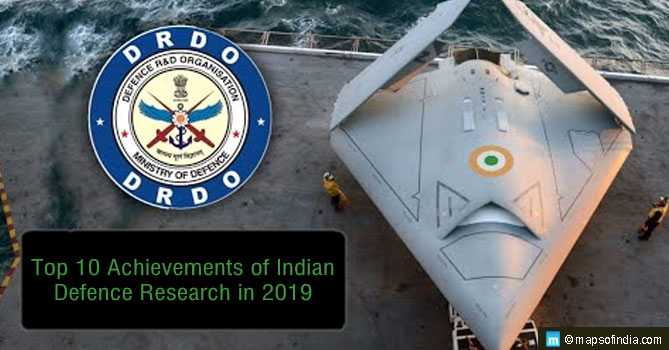Tessy Thomas is known as the Missile Woman of India. She shattered gender barriers in a male-dominated field of space science. She is a well-known scientist at the Defence Research and Development Organisation (DRDO). There, she has led many critical missile projects. Her work on the Agni missile series has helped India to strengthen its air defence capabilities. She was born in Kerala. Her journey has inspired many women in the STEM field.
Early Life and Inspiration
Tessy Thomas was born in April 1963. She grew up in Thathampally, Alappuzha, in Kerala. Her childhood was simple. Her father, Taiparambil Thomas, was a small businessman or an accountant. Her mother, Kunjamma, was a teacher. They raised Tessy and her five siblings. When Tessy was in 8th class, a paralytic stroke left her father bedridden. Facing this kind of hardship at an early age is responsible for making her character strong. She used to live near the Thumba Equatorial Rocket Launching Station. There she saw rockets from childhood, which led her to be fascinated with rockets. This early exposure to rockets laid the foundation for her career. In school, she excelled in mathematics and science. Her passion for rockets led her to pursue engineering in college. She completed her B.Tech in Electrical Engineering from Calicut University in 1983.
Educational Journey and Career Beginnings
Her academic path was crafted with detail and thoughtfulness. She received a DRDO sponsorship to pursue an M.Tech in Guided Missiles from the Institute of Armament Technology in Pune in 1986. Then she completed her PhD in Missile Guidance from Jawaharlal Nehru Technological University in 2014. She also holds an MBA in Operations Management from IGNOU in 2007. In the beginning, she wanted to be an IAS officer. While trying to attempt the UPSC exam, she cleared the interview for DRDO and then joined there. In 1986, she became a faculty member at Pune’s Institute of Armament Technology. In 1988, she joined DRDO’s Inertial Navigation group as Scientist B in Hyderabad. Her early work focused on the Agni missile program under Dr. APJ Abdul Kalam’s mentorship.
Pioneering Role in the Agni Missile Program
Tessy Thomas’s contributions to the Agni series are excellent. She joined the Agni program in 1988. In the beginning, she worked on guidance and control systems. Her expertise in inertial navigation and solid propellant systems was important here. She designed guidance schemes for long-range missiles. Which is now used across all Agni variants. As Project Director for Agni-IV, she led that test successfully in 2011. She also worked as Project Director for Agni-V, this missile is India’s first intercontinental ballistic missile, which has a range of over 5000 kilometres. The Agni-V’s 2012 and 2018 tests marked major milestones in India’s defence programme. Her work helped the missile to withstand re-entry temperatures of 3000°C. She became the first woman to lead a missile project in India. Her leadership strengthened India’s defence strategy.
Breaking Gender Barriers in DRDO
Tessy Thomas joined DRDO when women were rare in defence research. This field was mostly male-dominated. In 1988, only five women worked there. She faced a male-dominated field but never experienced overt bias. Her work spoke for itself, and she gained recognition for her work. She became a role model for many working women in STEM. In 2012, Prime Minister Manmohan Singh praised her for breaking the glass ceiling. Her leadership as Director General of Aeronautical Systems from 2018 showcased her influence. She inspired initiatives like G20 EMPOWER. This initiative promotes women’s leadership in various fields. Her journey challenges stereotypes in society and encourages women to pursue science.
Awards and Recognition
Her contributions to the defence research field have earned her numerous accolades. In 2001, she received the DRDO Agni Award for Excellence in Self-Reliance. She won the DRDO Scientist of the Year Award in 2008. Her work on Agni-IV and Agni-V earned Performance Excellence Awards in 2011 and 2012. In 2012, she received the Lal Bahadur Shastri National Award for excellence in public administration. She received other honours, including the Suman Sharma Award in 2009 and the Madam Marie Curie Mahila Vijnana Puraskar in 2012. In 2018, she received the Dr. Thomas Cangan Leadership Award. These awards highlight her impact on India’s defence and women in science.
Challenges and Controversies
Her personal life had many ups and downs. She faced many personal and professional challenges. Balancing family and maintaining a career was tough. She often prioritised missile launches over family, leaving her son Tejas during illness with other family members. A 2018 controversy stirred debate. A former DRDO researcher accused her of dismissing a sexual harassment complaint against a senior scientist. The researcher claimed Tessy intimidated her into withdrawing the complaint. Tessy has denied all the allegations, stating a committee found no evidence. The accuser, who was a contract employee at that time, was terminated. This incident raised questions about workplace dynamics in such a prestigious government organisation. Despite this, Tessy’s technical achievements remain undisputed. Her ability to navigate challenges shows her resilience.
Legacy and Future Impact
Her legacy extends beyond her work in missiles. In 2024, she became Vice-Chancellor of NICHE University in Kanyakumari. She always wants students to advance academically and achieve excellence in the field they aspire to pursue. Her story motivates young women in STEM and all over India. A 2023 Hindu report quoted that she emphasised research for national progress. She continues to advocate for innovation in defence technology. Her work on Agni’s multiple re-entry vehicles (MIRVs) could enhance India’s strategic capabilities. She has helped India build a strong military technology. As India pushes for self-reliance in every field, its contributions remain vital. Her journey from a small Kerala village to DRDO leadership inspires future scientists. She is still motivating many women to join the defence research field. She proves that gender is not a barrier if you want to excel in your field.
Conclusion
Tessy Thomas is known as India’s Missile Woman. Her work on Agni-IV and Agni-V transformed India’s defence picture, helping India to be self-made in defence. She broke gender barriers in DRDO and inspired many women in STEM. Her journey from Kerala to leading missile projects showcases that anyone can achieve their dream if they work for it. She has received many Awards, like the Lal Bahadur Shastri National Award honouring her impact in her field. She has faced many challenges in her personal and private life. Her legacy drives India’s self-reliance and gender equality. Tessy’s story shows that dedication can change a nation. She remains a beacon for aspiring scientists.





